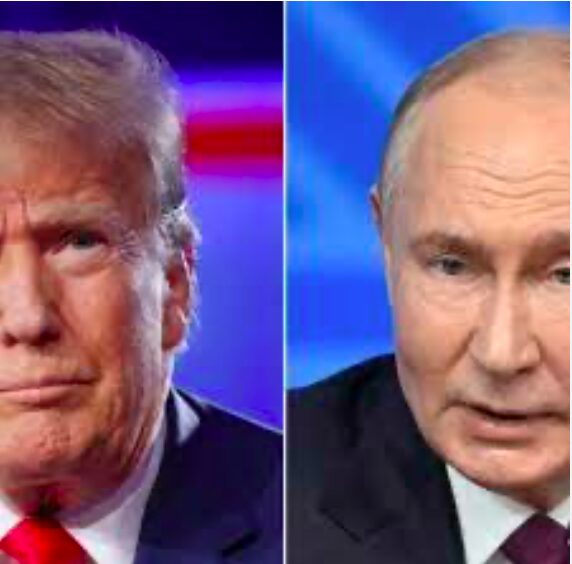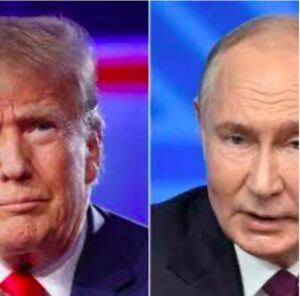The US-Russia Equation and the Construction of a New Middle East Paradigm

By Bedouin Report
Abstract
This article explores the strategic and legal implications of a potential US-Russia political reset, focusing on its impact on the Middle East and the global energy transition. It argues that despite a history of rivalry, both nations share urgent mutual interests, particularly in relation to Sustainable Development Goal No. 7 (SDG 7), which calls for universal access to modern, sustainable energy. Drawing from post-9/11 security doctrine, international legal frameworks, and the emerging agency of Gulf states, the article contends that the Middle East is no longer a passive arena for external power struggles. Instead, it is positioned to become a key architect of global cooperation. Through energy diplomacy and legal recalibration, the region may offer a pragmatic pathway for adversaries to become co-builders of stability in an increasingly multipolar world.
Introduction
The United States and the Russian Federation have for decades engaged in a precarious dance, alternating between strategic hostility, tactical alignment, and mutual suspicion. Their bilateral relationship, forged in the crucible of Cold War rivalry, has remained a defining axis of international relations, particularly in matters of security, energy policy, and the legal frameworks governing global order. Yet, as the global architecture continues to evolve under the weight of climate imperatives, cybersecurity threats, and regional instability, it is increasingly apparent that these two global powers must either find common ground or risk accelerating systemic disorder. Nowhere is this dynamic more consequential than in the Middle East, a region that has historically served as both a theater for US-Russian competition and a potential nexus for energy-driven cooperation.
Thesis
This article contends that a recalibration of US-Russia relations, framed not by ideological antagonism but by shared strategic interests, could help construct a new paradigm of engagement in the Middle East. Such a paradigm would pivot from confrontation to conditional cooperation, focusing on sustainable energy development, regional security architecture, and adherence to international legal norms. Central to this framework is the potential to accelerate progress toward the United Nations’ Sustainable Development Goal No. 7 (SDG 7), which seeks to ensure access to affordable, reliable, sustainable, and modern energy for all by 2030.¹ In a region disproportionately dependent on fossil fuels and acutely vulnerable to climate shocks, SDG 7 is not merely an aspirational target, it is a strategic necessity.
However, global progress on SDG 7 has recently shown signs of backsliding. As of 2022, nearly 685 million people still lacked access to electricity, marking the first reversal in two decades, while more than two billion remained without access to clean cooking fuels.² Meanwhile, the share of renewable energy in total final energy consumption remains stagnant, and gains in energy efficiency have slowed below the rates needed to meet global climate targets.³ In response, multilateral institutions have issued calls to triple renewable energy capacity and double energy efficiency improvements by 2030.⁴ These demands are not only technical; they are deeply political, requiring geopolitical actors to align their economic and security strategies with a new energy ethic.
In this light, a reimagined US-Russia relationship has implications that extend far beyond bilateral diplomacy. It could catalyze a new geopolitical approach, one where both nations, despite their differences, serve as co-constructors of energy stability in one of the world’s most volatile but resource-rich regions. This article draws from the security context of the post-9/11 era, the legal tensions between domestic and international frameworks, and the strategic leverage of the Gulf nations, to argue that the Middle East is no longer merely the stage upon which global rivalries unfold. It is, increasingly, the arena where a new model of global order may be tested, and perhaps born.
I. Historical Background: The US-Russia Arc and the Middle East as Theater
Since the close of the Second World War, the relationship between the United States and Russia, first in its Soviet form and then as a post-Soviet federation, has functioned as a barometer of global power equilibrium. From the Cuban Missile Crisis to détente, from the collapse of the Soviet Union to the assertiveness of post-2014 Russia, this relationship has shifted from direct confrontation to uneasy coexistence. But across these decades, the Middle East has remained a constant: a region where the fault lines of this great power rivalry consistently manifest in proxy conflicts, military entrenchments, and economic posturing.
In the early 2000s, following the September 11 attacks, the United States initiated a sweeping transformation of its global security doctrine, invoking the National Security Act of 1947 to justify a series of foreign and domestic measures that prioritized homeland defense over multilateral consensus.¹ Withdrawing unilaterally from the Anti-Ballistic Missile Treaty in 2001, Washington signaled its preference for preemptive sovereignty over negotiated balance.² This decision marked not only a legal turning point in US-Russia relations but also a perceptual one. In his widely cited 2007 speech at the Munich Security Conference, President Vladimir Putin condemned the unipolarity of American power, warning that “a unipolar world is not only unacceptable but also impossible in today’s world.”³
Russia’s rebuke was not limited to rhetoric. It began to act with increasing assertiveness in regions where American influence had historically gone unchallenged. Nowhere was this more apparent than in the Middle East. From its support of the Assad regime in Syria to its renewed strategic ties with Gulf states, Moscow made clear that it was no longer willing to observe Washington’s primacy in the region from the sidelines. Meanwhile, the United States, exhausted from prolonged wars in Iraq and Afghanistan, began to recalibrate its military presence and diplomatic posture in the region, thereby creating openings for new alignments.
The result is a complex tapestry of interdependence and ideological divergence, a situation in which both powers find themselves simultaneously constrained by history and compelled by strategic necessity. In an age where cyber warfare, climate imperatives, and energy interconnectivity transcend traditional battle lines, the old binaries of East versus West are no longer tenable. The Middle East, with its abundant energy reserves, sovereign wealth, and increasingly multilateral orientation, is emerging not merely as contested terrain, but as a potential bridge.
This history matters because it reveals both the dangers and the potential of a US-Russia rapprochement. While past engagements have often been marked by mistrust and asymmetry, the shifting global context, especially the shared threat of climate destabilization and the demands of global energy transition, has created a rare moment of mutual interest. Whether that interest can be converted into cooperative architecture remains to be seen. But the precedent suggests that while the Middle East has long absorbed the consequences of great power rivalry, it may now hold the key to its transformation.
II. Legal and Strategic Fault Lines: National Sovereignty vs. International Law
At the core of the US-Russia dynamic lies an unresolved tension between national sovereignty and international law. Both nations, while publicly committed to the principles of international order, have, in practice, demonstrated selective adherence to global legal norms. This inconsistency is not simply a matter of hypocrisy. It is a calculated exercise of power through legal flexibility, where sovereignty becomes the primary currency of action, and international obligations are invoked or discarded based on perceived national interest.
Following the attacks of September 11, 2001, the United States activated a broad interpretation of the National Security Act of 1947, framing national defense as the supreme priority in both foreign and domestic policy.¹ This legal framework gave Washington broad latitude to expand surveillance, intervene militarily, and extend its counterterrorism reach far beyond traditional borders. International law was acknowledged, but rarely allowed to constrain American prerogative. When the U.S. withdrew from the Anti-Ballistic Missile (ABM) Treaty in 2001, it cited the evolving nature of threats as justification for departing from an agreement that had, until then, functioned as a keystone of bilateral arms control.²
Russia, for its part, interpreted this move as a violation of the balance of strategic deterrence. President Putin publicly warned that the withdrawal from the ABM Treaty undermined “the entire system of international security.”³ In the years that followed, Moscow not only rearmed but repositioned itself as a guardian of multipolarity, resisting what it saw as Western overreach under the guise of liberal internationalism. Yet, Russia too has invoked sovereignty to justify actions that conflict with international legal expectations, whether in Georgia, Ukraine, or Syria.⁴
This mutual pattern of selective engagement with international law underscores a larger problem: the erosion of binding multilateralism in favor of great power exceptionalism. Institutions like the International Court of Justice (ICJ) have struggled to enforce rulings when national legislatures, particularly the U.S. Congress, refuse to legislate international agreements into binding domestic law. In Medellín v. Texas, the U.S. Supreme Court ruled that treaties ratified by the United States do not constitute domestic law unless Congress enacts implementing legislation or the treaty is explicitly self-executing.⁵ This precedent severely limits the enforceability of international obligations, even those signed and ratified by the United States.
Russia, too, has moved to legally insulate itself from international oversight. In a 2020 address, President Putin proposed constitutional amendments that would give primacy to Russian law over international treaties and decisions.⁶ This legal insulation parallels Russia’s broader geopolitical doctrine: international law is respected when it affirms national sovereignty, but resisted when it infringes upon it.
Despite this shared ambivalence toward international law, both nations continue to engage with it when it offers diplomatic utility. Bilateral treaties, arms control agreements, and arbitration mechanisms remain tools of convenience, used to manage rivalry rather than establish enduring cooperation. Yet, if the goal is to shift from adversarial dynamics to architectural engagement, particularly in a region as strategically sensitive as the Middle East, then a reorientation toward enforceable, equitable legal frameworks is essential.
The Middle East, long a recipient of externally imposed legal and strategic norms, is increasingly asserting its own sovereignty and shaping its own legal identity. The Gulf states in particular have demonstrated growing sophistication in international arbitration, investment treaty frameworks, and environmental regulatory standards. This legal awakening presents a rare opportunity: a moment when regional stakeholders might demand that external powers meet them not with coercion or neglect, but with respect for international legal parity.
III. Energy Diplomacy and the Promise of SDG 7
As the global race to mitigate climate change accelerates, the nexus between energy, diplomacy, and national security is becoming increasingly pronounced. Nowhere is this convergence more critical than in the Middle East, a region endowed with abundant hydrocarbon resources yet increasingly aware of its vulnerability to climate volatility and external geopolitical shocks. In this context, a renewed US-Russia relationship holds the potential to do more than de-escalate conflict; it could help orchestrate a pragmatic energy transition in one of the world’s most strategically vital corridors.
Central to this potential realignment is the United Nations’ Sustainable Development Goal No. 7 (SDG 7), which calls on all nations to “ensure access to affordable, reliable, sustainable and modern energy for all” by 2030.¹ Despite the diplomatic momentum surrounding this goal, the international community remains significantly off track. As of 2022, more than 685 million people worldwide still lacked access to electricity, while over two billion remained dependent on harmful and inefficient cooking fuels.² Progress in expanding the share of renewable energy has been modest, and the pace of improvement in energy efficiency has slowed in recent years, far below the levels needed to align with climate targets.³
Recognizing this regression, global institutions have called for transformative action. The International Renewable Energy Agency (IRENA) and the World Bank have issued coordinated appeals to triple global renewable capacity and double the rate of energy efficiency improvement by 2030.⁴ At the center of this ambition lies the imperative of new partnerships, between nations, sectors, and ideologies. It is here that the possibility of a US-Russia reset intersects meaningfully with the energy aspirations of the Middle East.
The Gulf states, led by the United Arab Emirates and Saudi Arabia, have emerged not merely as hydrocarbon exporters but as pioneers in energy diversification. From the construction of solar megaprojects to the strategic investments in hydrogen and nuclear energy, the region is undergoing a quiet revolution, one that places it at the forefront of the global energy dialogue.⁵ These shifts are not cosmetic. They reflect a deepening understanding among regional policymakers that long-term security is contingent on resilience: economic, environmental, and infrastructural.
A cooperative US-Russia stance toward energy investment, technology sharing, and infrastructure development in the Middle East could significantly advance the goals of SDG 7. The United States brings to the table a network of multinational corporations, clean energy innovation, and regulatory experience. Russia offers large-scale engineering capabilities, extensive regional experience, and a willingness to engage on terms that may be less ideologically constrained than traditional Western partnerships. If both powers could move beyond zero-sum rivalry and embrace a multipolar model of influence, their involvement could catalyze the region’s transition toward sustainable and secure energy systems.
Such cooperation would not be without its complexities. US sanctions on Russian entities, tensions over Ukraine, and divergent approaches to Syria and Iran pose real diplomatic hurdles. Yet, if the Middle East is understood not as a pawn but as a partner, one with agency, capital, and climate vulnerability, then both the U.S. and Russia may find strategic value in engaging through the lens of sustainability rather than supremacy.
In this light, SDG 7 is more than a development target; it is a platform for global power recalibration. It allows adversaries to justify cooperation not as capitulation but as mutual survival. It enables the Gulf to reposition itself from mere supplier to global standard-bearer in clean energy investment. And it invites new forms of diplomacy, what might be called “sustainable statecraft”, where climate and commerce, law and sovereignty, exist not in tension but in necessary balance.
IV. The Middle East as Architect, Not Arena
For much of the twentieth and early twenty-first centuries, the Middle East was cast as a geopolitical stage upon which the ambitions of global superpowers played out. From Cold War proxy battles to twenty-first-century regime-change policies and military entrenchments, the region has absorbed the external consequences of global rivalries more than it has shaped their resolution. However, this narrative is no longer tenable. The Middle East, particularly its Gulf subregion, is asserting a new identity: not as a battleground of foreign agendas, but as a purposeful architect of the future order.
This shift is evident in both strategy and posture. The Gulf Cooperation Council (GCC) states are no longer merely rentier economies leveraged by oil rents. They have become global investors, climate negotiators, hosts of multilateral forums, and pioneers of digital and energy transitions. The United Arab Emirates’ successful bid to host COP28 in Dubai, alongside its push for a decarbonized, knowledge-based economy, reflects this maturation.ⁱ Likewise, Saudi Arabia’s Vision 2030 strategy is not only a domestic reform agenda but a global signaling mechanism: a declaration of sovereign intention to move beyond oil dependence and toward strategic diversification.
The implications of this for US-Russia dynamics are profound. Both powers now confront a Middle East that is less malleable, more sophisticated, and increasingly multilateral. In this transformed landscape, unilateral coercion yields diminishing returns. Instead, meaningful engagement must be built on mutual interests, especially around energy innovation, sustainable finance, and regional stability. In this respect, Gulf states are uniquely positioned to serve as intermediaries, connectors, and even moderators between competing global visions.
If the United States and Russia are to construct a new paradigm of influence, one not predicated on exclusion but on co-engagement, it will depend in large part on how they relate to the region not as a zone of instability, but as a zone of opportunity. A Middle East empowered to choose its partnerships, define its energy priorities, and institutionalize its climate strategy will necessarily command a new type of respect. And it may, ironically, provide the neutral ground where the world’s most entrenched adversaries can discover their most consequential shared interests.
The challenge, of course, lies in execution. Old habits of rivalry die hard. But as climate pressures intensify and global energy interdependence deepens, the costs of continued antagonism may soon outweigh the risks of collaboration. In that emerging calculus, the Middle East is no longer peripheral. It is central.
Conclusion
If history is any guide, adversarial relationships between great powers rarely transition into stable partnerships without contest, recalibration, and resistance. Yet the urgency of the twenty-first century, from accelerating climate disruptions to the fragility of energy infrastructure and the erosion of multilateralism, demands a different logic. The prospect of a US-Russia reset should not be viewed through the nostalgic lens of détente, but rather as a strategic reimagining of influence in a multipolar world. In this reordering, the Middle East is no longer merely where external rivalries are contested, but where global cooperation could be forged. Through shared investment in energy diplomacy, legal parity, and sustainable development, the region may offer more than just leverage, it may offer the architecture for a new global equilibrium. And if the United States and Russia, once Cold War antagonists, can learn to build together rather than oppose apart, then perhaps they may find in the deserts of the Gulf not only new markets, but common ground.
Bibliography
- United Nations. “Sustainable Development Goal 7: Ensure Access to Affordable, Reliable, Sustainable and Modern Energy for All.” UN Energy. Accessed April 21, 2025. https://un-energy.org/newsdg7/.
- World Bank. “Progress on Basic Energy Access Reverses for First Time in a Decade.” June 2024. https://www.worldbank.org/en/news/press-release/2024/06/11/progress-on-basic-energy-access-reverses-for-first-time-in-a-decade.
- United Nations. “SDG7: Data and Projections.” Accessed April 21, 2025. https://www.un.org/en/energy/page/sdg7-progress-and-info.
- International Renewable Energy Agency (IRENA). “Collaborative Actions to Pave the Road for SDG7 Achievement.” January 2025. https://www.irena.org/News/expertinsights/2025/Jan/Collaborative-Actions-to-Pave-the-Road-for-SDG7-Achievement.
- U.S. Department of State. “The National Security Act of 1947.” Accessed December 10, 2024. https://2001-2009.state.gov/r/pa/ho/time/cwr/17603.htm.
- Missile Defense Advocacy Alliance. “U.S. Withdrawal from the Anti-Ballistic Missile Treaty.” Accessed December 10, 2024. https://missiledefenseadvocacy.org/missile-defense-systems-2/missile-defense-systems/policy-coming-soon.
- President of Russia. “Speech and the Following Discussion at the Munich Conference on Security Policy.” February 10, 2007. Accessed December 30, 2024. http://en.kremlin.ru/events/president/transcripts/24034.
- Medellín v. Texas, 552 U.S. 491 (2008). Justia U.S. Supreme Court. https://supreme.justia.com/cases/federal/us/552/491/.
- Reuters. “Putin Says He Wants Russian Law to Trump International Treaties.” January 15, 2020. https://www.reuters.com/article/us-russia-putin-law-idUSKBN1ZE1EL.
- United Arab Emirates Government Portal. “UAE Sustainability Initiatives.” Accessed April 20, 2025. https://u.ae/en/about-the-uae/strategies-initiatives-and-awards/federal-governments-strategies-and-plans.









More Stories
The UAE-India Strategic Axis
The Jewel of the Gulf: How the UAE Became the New World’s Standard of Excellence